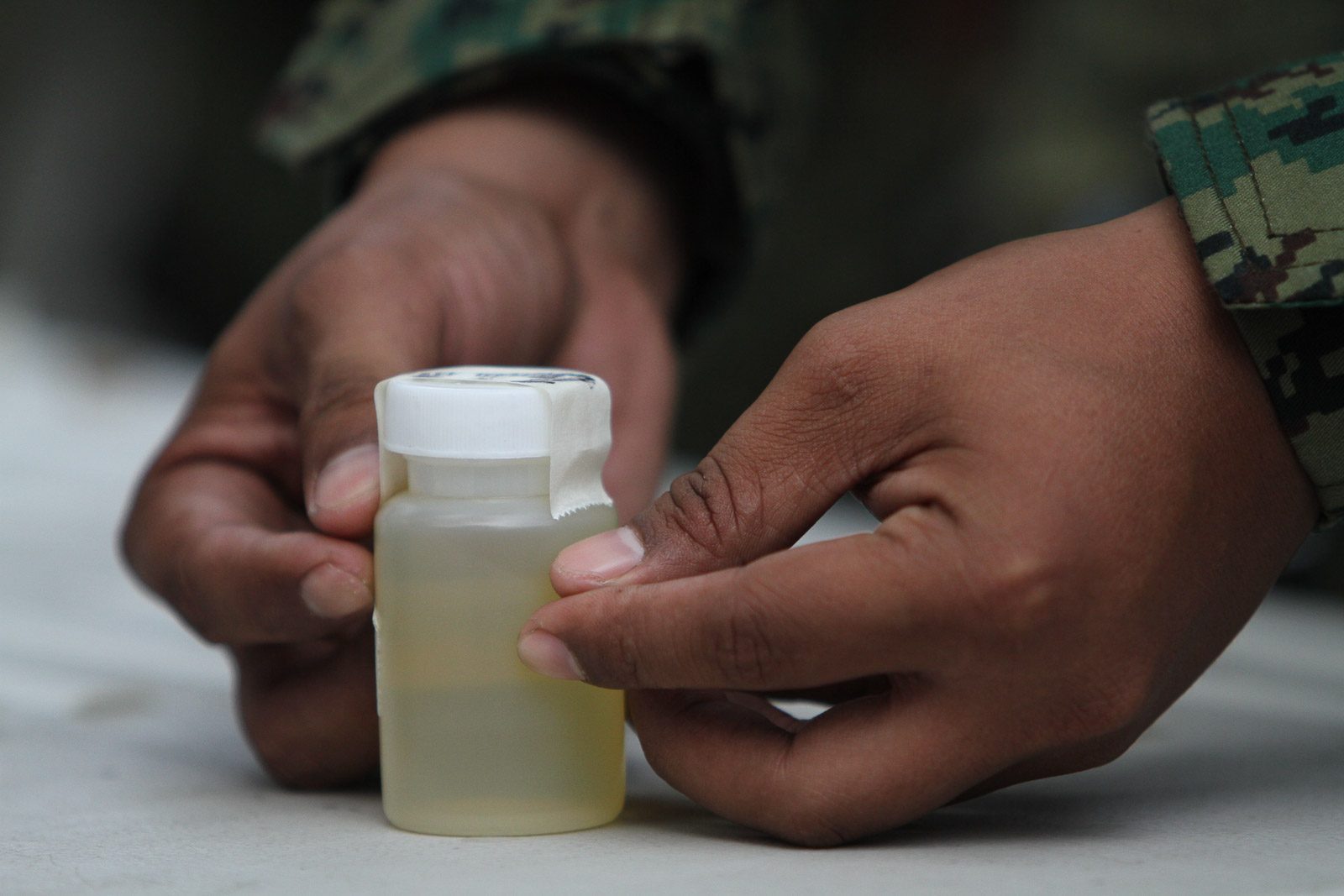SUMMARY
This is AI generated summarization, which may have errors. For context, always refer to the full article.

Since President Rodrigo Duterte suggested that one of the presidential aspirants in the 2022 elections is allegedly a cocaine user, some contenders have been coming out with unsolicited drug test results.
The first to come out with a negative result was former senator and dictator’s son Ferdinand Marcos Jr., who matched specific descriptions Duterte said about the alleged drug addict. Marcos is the standard-bearer of Duterte’s daughter, Davao City Mayor Sara Duterte.
Sara came out with her own drug test results conducted in a lab in Davao City. Since then, Senator Ping Lacson and his running mate Senate President Vicente Sotto III voluntarily underwent drug tests, too.
While opposition leader Vice President Leni Robredo, another contender in the presidential race, backs testing national candidates for illegal drug use, she said it must be done randomly.
“Dapat hindi siya nakaplano, dapat biglaan para hindi napapaghandaan,” Robredo said. (It should not be planned – it should be random so it cannot be prepared for.)
Can drug tests in the Philippines accurately capture if a person is a drug user? How are they done, and what are their limits?
Here are some things to know.
How is it done?
Patients are tested for illegal drugs by giving specimen samples to health workers, like registered medical technologists (RMT), for analysis. They must first sign a form giving consent to give a sample of urine, blood, saliva, hair, sweat, or tissues.
First tests may be carried out as “screening tests” through rapid test kits that can establish a potential or presumptive positive result.
Urine tests are the most common method, where patients urinate into a cup. According to Dr. Tony Leachon, urine samples can contain high concentrations of parent drugs, or the drugs being tested for, and drug by-products.
The Dangerous Drugs Board (DDB) requires that the taking of the urine sample must be done in an area where manipulation, like adding water, is not possible.
In a 2016 ABS-CBN report, RMT analyst Joanna Rufino said patients are required to wash their hands first before undergoing the test, because substances that can manipulate the samples can be hidden under fingernails. Health workers monitor and observe the specimen collection.
The bottles in which the samples are kept must have the patient’s signature and the date of the test written on masking tape. Samples should also have a custody form, which the health worker handling the sample must sign.
All laboratories conducting drug tests are required to follow Department of Health (DOH)-prescribed guidelines in collecting, handling, and disposing urine specimens. All test results must bear the signature of the analyst and the laboratory head.
One type of test kit the DOH procures is one that detects metabolites or chemicals of methamphetamine (shabu) or tetrahydrocannabinol (THC or marijuana) – the two most abused illegal drugs in the Philippines. These rapid test kits require a few drops of a urine sample, and show results similarly to pregnancy tests.
According to physician and RMT Lara Acuba, typical drug tests detect only shabu and marijuana, but patients can also undergo expanded tests that include detection of cocaine, ecstasy, and other drugs.
What if a patient tests positive?
If a screening test turns out positive, the patient could be subjected to a confirmatory test which involves a further analytical procedure to more accurately determine the presence of dangerous drugs in a specimen.
According to the DOH, people who test positive are advised to undergo a drug dependency examination conducted by a physician preferably accredited by the DDB or DOH to diagnose and manage drug dependents.
In random drug tests for workplaces, the DDB requires no further action if a result is negative.
What are the limitations?
In some government processes like a driver’s license application, drug tests are mandatory. However, a drug user who knows they’ll be subjected to a test may abstain for a certain period before the test in a bid to yield a negative result.
While urine samples are the most common, Leachon noted that these are less effective than other methods because of their short retrospective period.
“In other words, a urine test is less likely to detect regular drug use beyond a 48-window period. Another drawback of urine testing is the ease and opportunity for tampering with the samples,” said Leachon.
Leachon added that blood tests may be more detailed than urine tests, since they can measure the actual amount of drugs in the blood. Blood tests are also more tamper-proof than urine tests.
According to the American Addiction Centers, cocaine or its metabolites typically can show up in a blood or saliva test for two days, a urine test for three days, and a hair test for months to years.
A heavy cocaine user may test positive on a urine test for up to two weeks.
“But other factors can influence how long it stays in someone’s body, such as metabolism, weight, dose, and frequency of use. Drinking while taking cocaine may also slow its elimination from the body,” said the American Addiction Centers.
Saliva tests, meanwhile, are only useful in detecting recent drug use. Leachon said saliva testing for marijuana can only provide accurate results if the subject smoked or used cannabis within the last 4 to 10 hours.
Medical technologist Acuba says random testing is needed to truly determine if a patient is a user.
“For example, one week ‘di nag-marijuana, ‘di na sya ma-de-detect sa urine. So dapat random, unannounced ‘yung testing,” said Acuba. (For example, the patient doesn’t use marijuana for a week, so the drug won’t be detected in the urine. So testing must be random and unannounced.)
“Meron special labs na nag-da-drug using hair strand, kasi mas matagal nag-se-stay ‘yung drugs sa hair. So for example kahit six months ka na ‘di nag-da-drugs, puwede pa din ma-detect sa hair,” she added.
(There are special labs that do drug tests using hair strands, because drugs remain longer in hair. So for example, even if you’re clean of drugs for six months, it will still be detected in the hair.)
According to Leachon, drugs linger in the hair because drug metabolites enter the blood vessels in the scalp. “The hair filters the drugs and keeps a permanent record of the drug use,” he said.
Data from the 2019 drug survey of the DDB shows that around six out of every 100 Filipinos aged 10 to 69 have tried drugs at least once in their life.
– Rappler.com
Add a comment
How does this make you feel?

![[OPINION] How truly prevalent is drug use in the Philippines?](https://www.rappler.com/tachyon/2021/11/Prevalence-of-drugs-Philippines-November-11-2021.jpg?fit=449%2C449)
There are no comments yet. Add your comment to start the conversation.